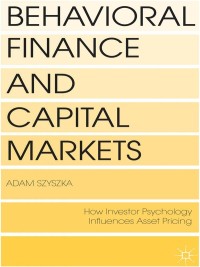Question
The capital asset pricing model (CAPM) is widely used to estimate the cost (required return) of common equity to a corporation. The CAPM looks like
The capital asset pricing model (CAPM) is widely used to estimate the cost (required return) of common equity to a corporation. The CAPM looks like this:
rs = rRF + bi(RPm) where
rs is the rate of return required for the stock
rRF is the risk free rate, usually from the 10-year Treasury yield
bi is the individual stock's beta coefficient as estimated from historical data
RPm is the market risk premium, that is, the difference between the risk-free rate and the rate investors have required on the average stock.
Here's an example for a risk-free rate of 2%, a beta of 1.5, and a market premium of 6%:
2% + 1.5*6% or 2% + 9% = 11%
What would be the cost of common equity for a company if the risk free rate is 1.5%, the company's beta is .85 and the market premium is 5%?
Answer in percent form to one decimal place, e.g. 8.25%.
Step by Step Solution
There are 3 Steps involved in it
Step: 1

Get Instant Access to Expert-Tailored Solutions
See step-by-step solutions with expert insights and AI powered tools for academic success
Step: 2

Step: 3

Ace Your Homework with AI
Get the answers you need in no time with our AI-driven, step-by-step assistance
Get Started


